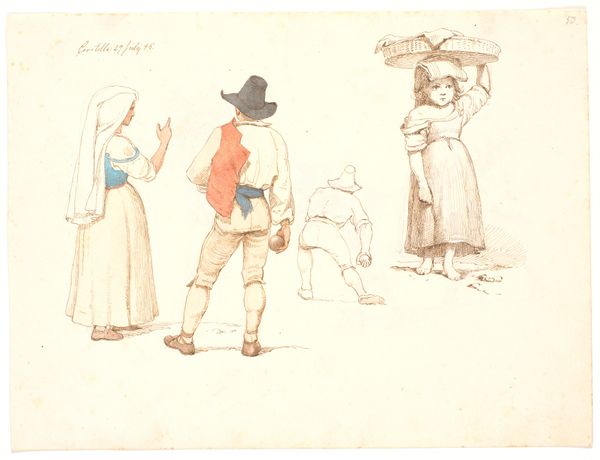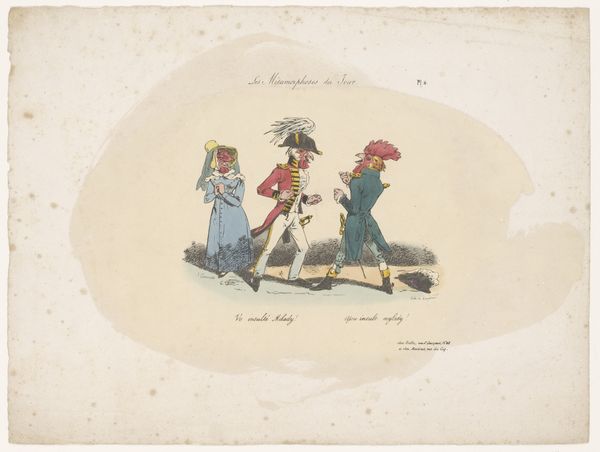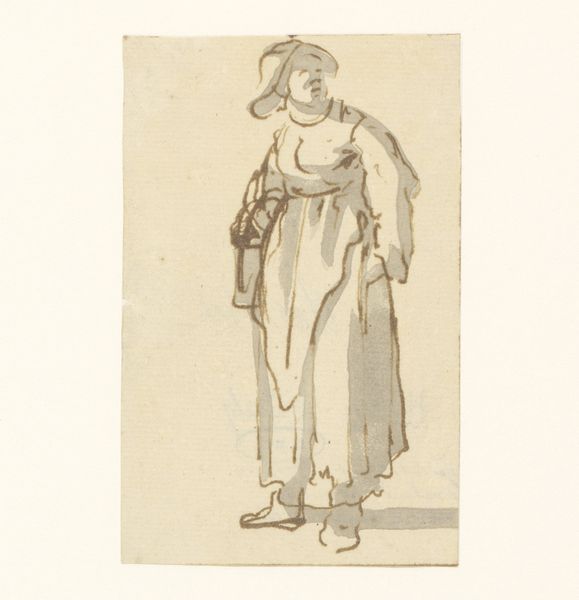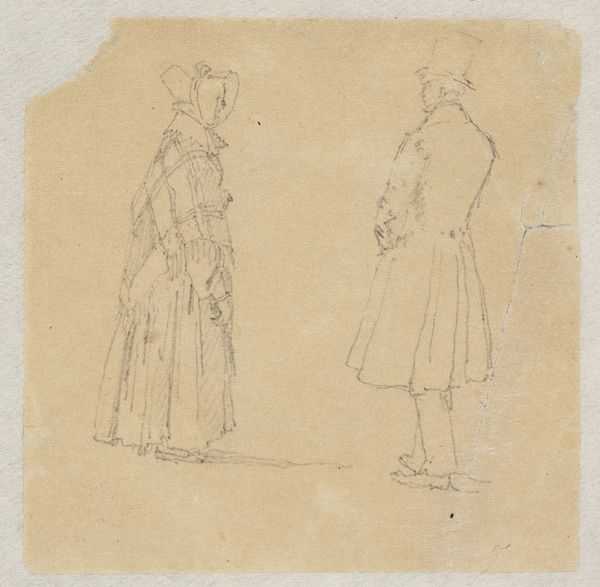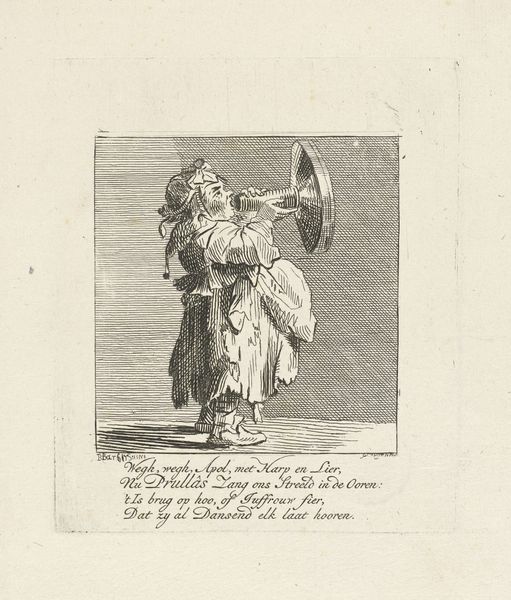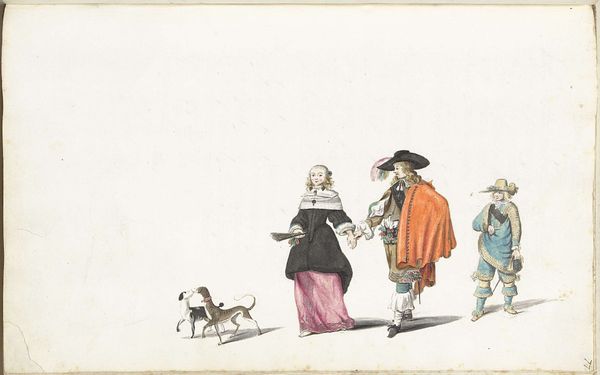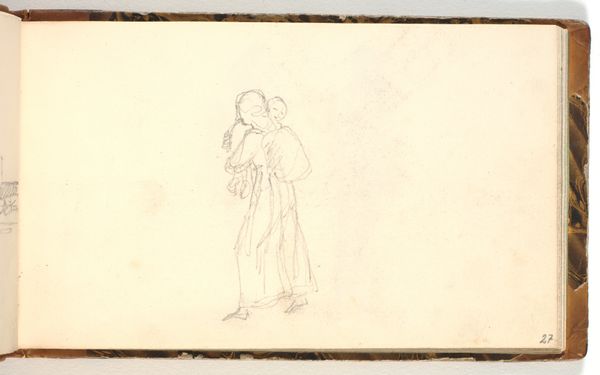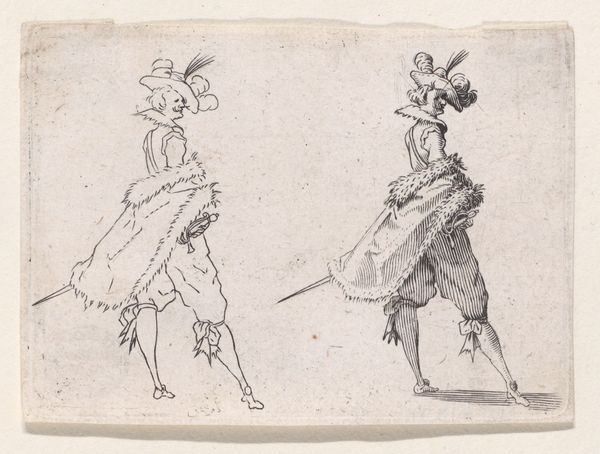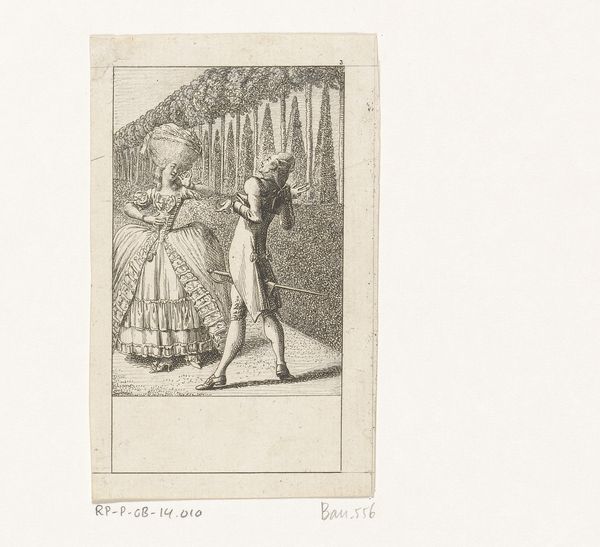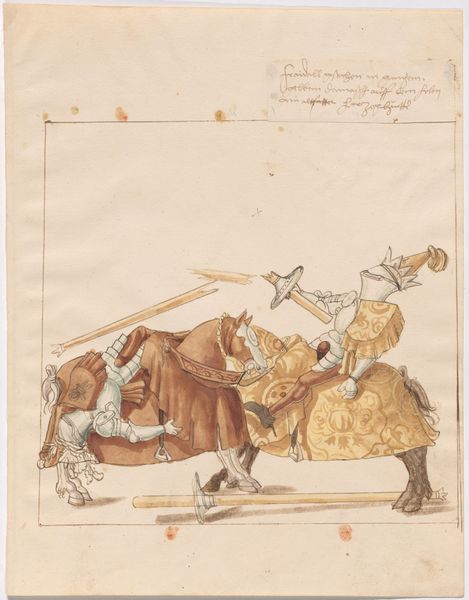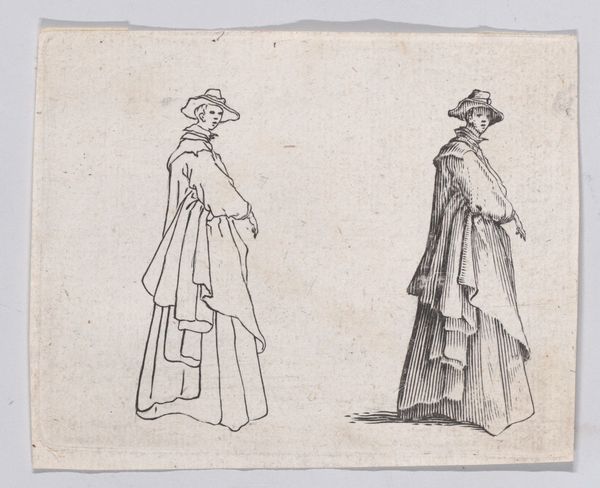
drawing, plein-air, watercolor
#
portrait
#
drawing
#
plein-air
#
watercolor
#
romanticism
#
genre-painting
Dimensions: 128 mm (height) x 172 mm (width) (bladmaal)
Curator: This drawing, “To dragtstudier, Procida,” comes to us from Martinus Rørbye, dated 1835. Editor: Immediately, I notice the plainness of it all. It looks almost like a child's rendering. I can't quite put my finger on why, perhaps the awkward proportions or the medium itself? Curator: The sketch-like quality speaks to a certain Romanticism—capturing the spirit of a place and its people, less concerned with rigid realism. Rørbye was very much interested in folk life and would frequently sketch local residents. Editor: Yes, "folk life"—an interesting phrase there. I wonder about these "local residents," depicted so plainly in watercolor and what appears to be some pencil. Was the work made en plein air? The paper itself looks thin and likely inexpensive. What did the local residents make of the depiction? What purpose was intended for these kinds of rapid sketches of local populations? Curator: He probably wanted to bring these types of studies back to the studio for future paintings and prints. Such artwork gave him and others access to people, especially women, whom bourgeois artists would not have had normal access to. These paintings ended up in state art museums like ours, contributing to Romantic nationalism by turning particular folk costumes into representative national garb. Editor: So, sketches such as this end up serving nationalist functions. By looking closely at the dress itself and the materials and means of production in this artwork, we can ask, what’s deliberately highlighted in this image? The choice of dress, for example. Look at how the pleats in her blue overcoat hang, or how that gold color spills over her skirt in a lovely manner. Curator: These sketches offer insights into cultural dynamics—how national identity was being constructed and reinforced through visual representation and consumption of particular costumes. Editor: I find myself thinking a lot about these depictions as visual acts rooted in accessing class and labor. From my perspective, the construction and consumption can be appreciated if one can remain sensitive to how these images can often erase local specificities in favor of homogenizing visual depictions of national culture. Curator: Right, and Rørbye likely was not aware that he was also participating in that process. The art and the means to produce them were simply available and valuable at the time. Thank you for helping me look at the role that such artwork had. Editor: Thank you, I too feel I see this sketch with new appreciation now!
Comments
No comments
Be the first to comment and join the conversation on the ultimate creative platform.
